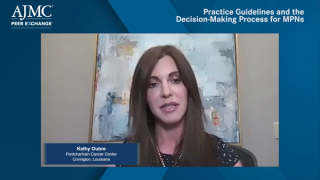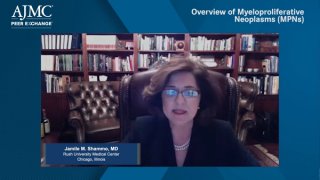
Rare Disease
Latest News

Latest Videos

CME Content
More News

More information is needed to better understand variations in how the drug affects individual patients.

Equity has to be made front and center in conversations about value assessment, otherwise all stakeholders will continue waiting for someone else to make the first move, said one panelist at the Value-Based Insurance Design Summit.
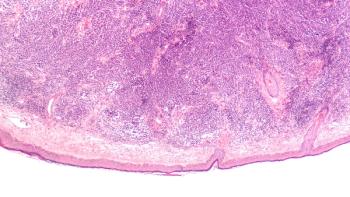
The patient sought care for a mass in her right buttock, but had no tonsillar symptoms.

Patients with myelofibrosis (MF) with single-hit mutations had similar outcomes to patients with wild-type TP53.
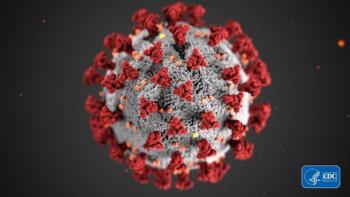
Older age was also a risk factor for hospitalization and death in patients with myeloproliferative neoplasms (MPN) who contract COVID-19, the investigators found.


The risk of second malignancy was similar among patients aged 66 and older who were treated with and without hydroxyurea.
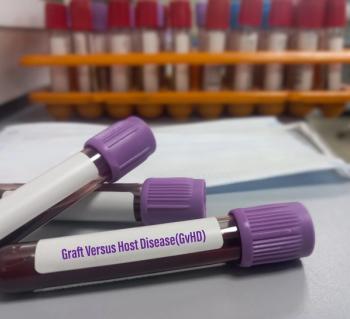
Lower levels of certain biomarkers were predictive of treatment response for graft-versus-host disease (GVHD) at day 28, investigators found.

Patients who had ruxolitinib added to their prophylactic regimens had lower rates of acute and chronic graft-versus-host disease (GVHD).

A new report found only about 2.8% of people with myelodysplastic syndromes (MDS) have JAK2 mutations.

The EASIX scoring system should not be used to predict outcomes following allogeneic stem cell transplantation (alloSCT) in patients with myelofibrosis.

The risk of death among people with primary myelofibrosis (PMF) dropped by 53% after ruxolitinib’s introduction, the study found, although the data also suggested only 8.5% of patients were prescribed the drug.

The FDA approved the first drug for the rare disease Friedreich’s ataxia; House Republicans seek information from pharmacy benefit managers (PBMs); FDA panel narrowly supports respiratory syncytial virus (RSV) vaccine for older adults.
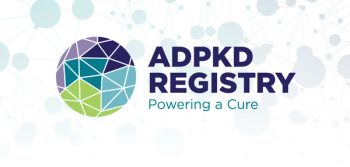
On Rare Disease Day, PKD Foundation, IQVIA Highlight Patient Registry Gathering Quality-of-Life Data
The Polycystic Kidney Disease Foundation and IQVIA are partners in the development of the ADPKD Registry, which is tracking longitudinal quality-of-life information from patients across North America.

Features of polycythemia vera (PV) can easily be misattributed to other causes, such as iron depletion or arterial hypertension.

The study also found, however, that transplant outcomes appear to be worse for Black African American patients who have primary myelofibrosis (PMF), although the study utilized a small sample size.

Patients with myelofibrosis (MF) who achieved a spleen response while taking ruxolitinib and lost it had survival outcomes similar to patients who did not respond, according to results from a real-world study.

The results of the futility analysis also suggest the therapy leads to significant clinical benefits.

Evidence suggests as many as 29% of people with myeloproliferative neoplasms (MPN) or myelodysplastic syndrome (MDS)/MPN have chronic kidney disease.

An analysis of 112 infant deaths found that the contribution of genetic diseases to mortality was higher than previously known, and that treatments are available for 30% of the genetic diseases uncovered by the study.

At the start of the COVID-19 pandemic, high levels of distress, overwhelm with daily problems, and unmet psychosocial information needs decreased caregiver-reported health-related quality of life in children with rare diseases.

Researchers explored the case of a 40-year-old woman with polycythemia vera (PV) who developed a portal vein occlusion 1.5 months postpartum after C-section.

High bleeding risk was seen among patients hospitalized with acute myocardial infarction (AMI) who had essential thrombocythemia (ET), particularly those treated with percutaneous coronary intervention.

Roger M. Lyons, MD, Discusses 10-Year Review of MDS Patient Data From the Community Oncology Setting
Evidence-Based Oncology™️ spoke with Lyons about the creation of this real-world data set and the pros and cons of different treatments for MDS.

A new review article shows how technologies like next-generation sequencing might help clinicians tailor care for myelodysplastic syndromes (MDS).





